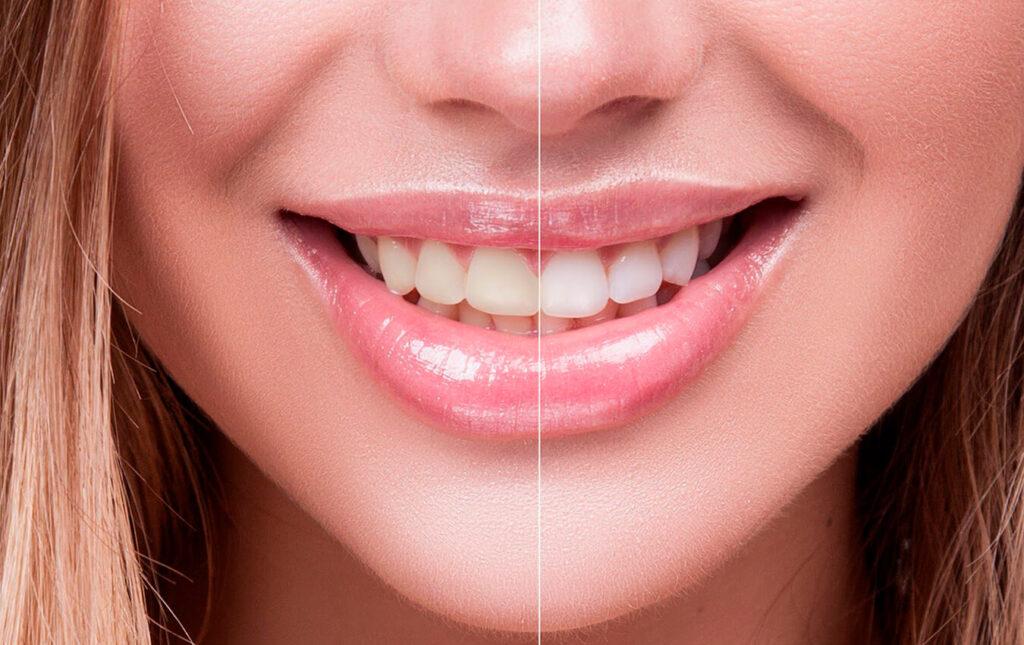
Whitening is the general name given to all the cosmetic procedures that whiten the teeth. These are in – office bleaching (professional bleaching), at home bleaching and whitening toothpaste. In – office bleaching is the most common form of tooth whitening, but at home bleaching and the use of whitening toothpaste are pretty popular too.
Benefits
- Tooth whitening enhances the patient’s smile
- It is an effective way of lightening the natural color of the teeth without removing any of the tooth surface.
Who is this procedure for?
- Anyone who is not satisfied with their teeth becoming more discolored in time
- People whose teeth are stained on the surface through smoking, food, drinks such as tea, coffee or red wine
- People whose teeth are stained under the surface due to certain antibiotics or small cracks in the teeth
- People who have calculus or tartar – these are known to cause staining.
Who should not consider this procedure?
- People who have brownish-hued teeth should know that whitening has little effect on their teeth
- Grayish-hued teeth do not bleach at all
- People who have bonding or tooth-colored fillings in their front teeth. The whitener only works on natural teeth, so the bonding/filling will stand out in the newly whitened smile
What happens before the procedure?
In-office bleaching requires more than one visit, with each visit taking about 30 minutes. If the patients chose to have the at home bleaching at the initial visit the dentist will make a mouth guard and will take impressions of the teeth.
What happens during the procedure?
The dentist applies either a protective gel to the patient’s gums or a rubber shield to protect the oral soft tissues. After that he or she uses a bleaching agent that is applied to the teeth; for that the dentist uses a specially made tray which fits into the patient’s mouth like a gum shield. Special laser lights may be used to enhance the action of the bleaching agent. The bleaching agent has an active ingredient, which is usually hydrogen peroxide or carbamide. This active ingredient is broken down and oxygen gets into the enamel on the teeth and the color is made lighter.
What happens after the procedure?
In some cases teeth become sensitive during the treatment period, but it is only temporary and lessens once the treatment is finished. Another side effect is soft tissue irritation – it happens in just a few cases, if the tray doesn’t fit properly or if the tissues come in contact with the bleaching agent. Just like sensitive teeth, it goes away once the treatment is over. Should you have such concerns, please discuss them with your dentist.

